Did you know that a group of zebras is called a dazzle?
While zebras may be numerous on the African plains, we never tire of watching them. Their beautifully-decorated bodies, combined with their fascinating and entertaining behaviors, make them a truly endearing creature.
There are only six surviving horse species in the world and three of them are zebras. The Burchell’s Zebra (shown here) is the most common and can be found throughout Southern and Eastern Africa. Compared with other species, the Burchell’s has rather broad stripes, but the color of those stripes can vary quite a bit depending on their location. In Southern Africa for example, individuals exhibit shadow stripes between the large black stripes on their torso, and you can see that effect in the zebras in this gallery. Baby zebras are much fuzzier and have a reddish-brown hue in their stripes. And, of course, the stripe pattern on every zebra is unique, just like your finger print.
This Burchell’s zebra photo gallery includes pictures taken during various seasons in Kruger National Park, South Africa and in Etosha National Park, Namibia. We hope you enjoy this dazzling dazzle of zebras. (All photos by Cristina Garcia and Hal Brindley.)
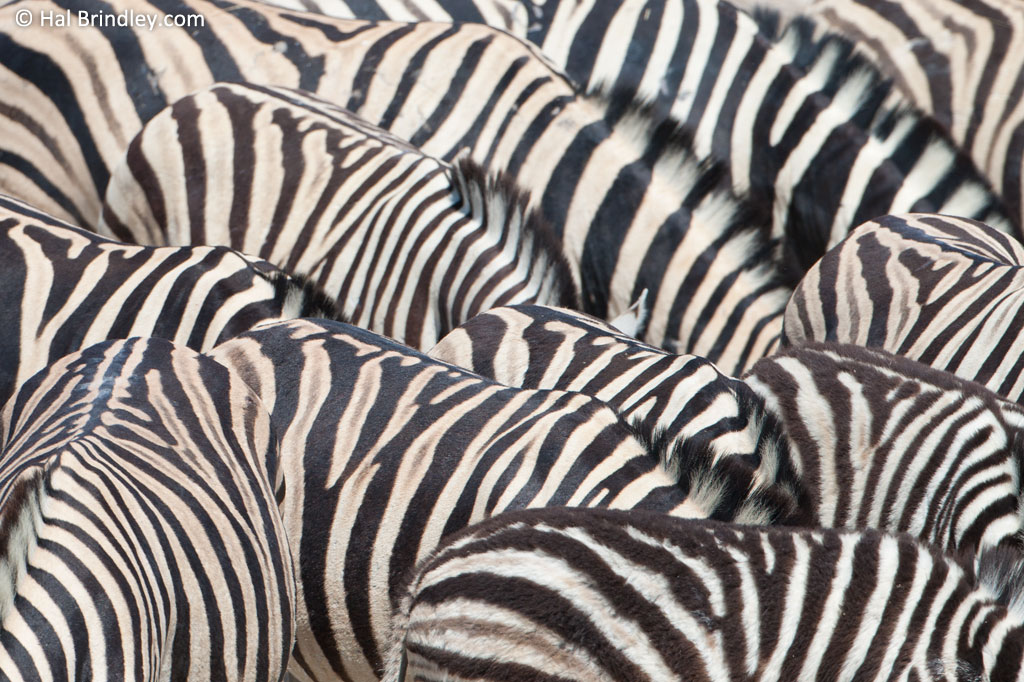
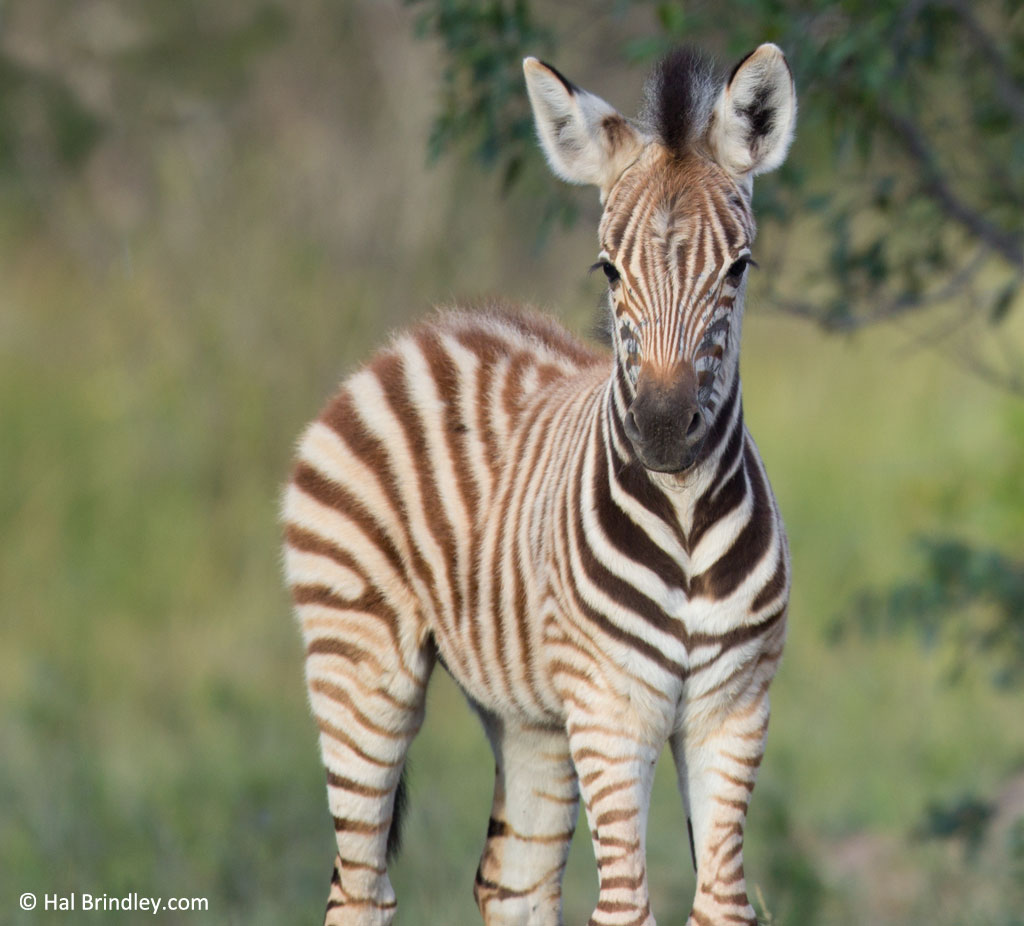
Which photo is your favorite?

Cristina Garcia
Zoologist and wildlife photographer. She has worked in the field with jackals, wolves, cheetahs, & leopards. She serves on the Board of Directors of SEE Turtles, a non-profit sea turtle conservation organization.
Read her posts at Travel For Wildlife and see more of her work at Truly Wild, & Our Wild Yard.

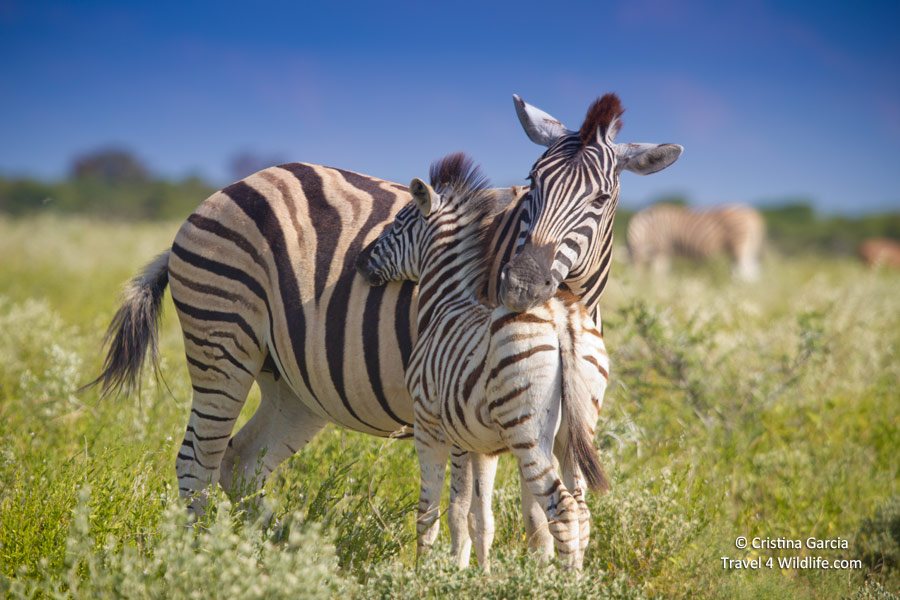
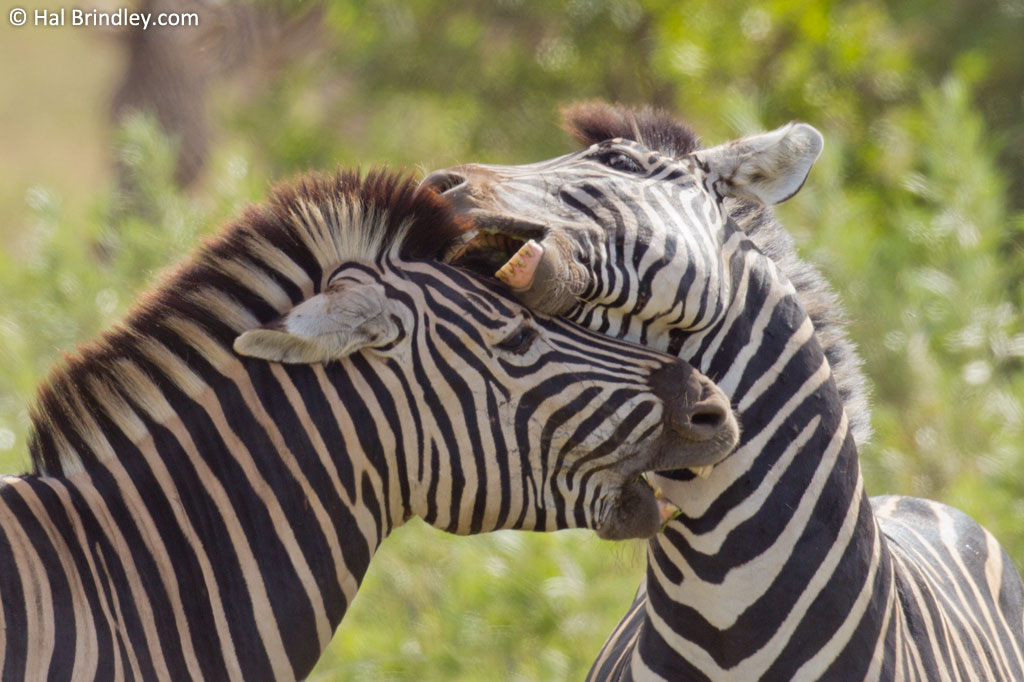
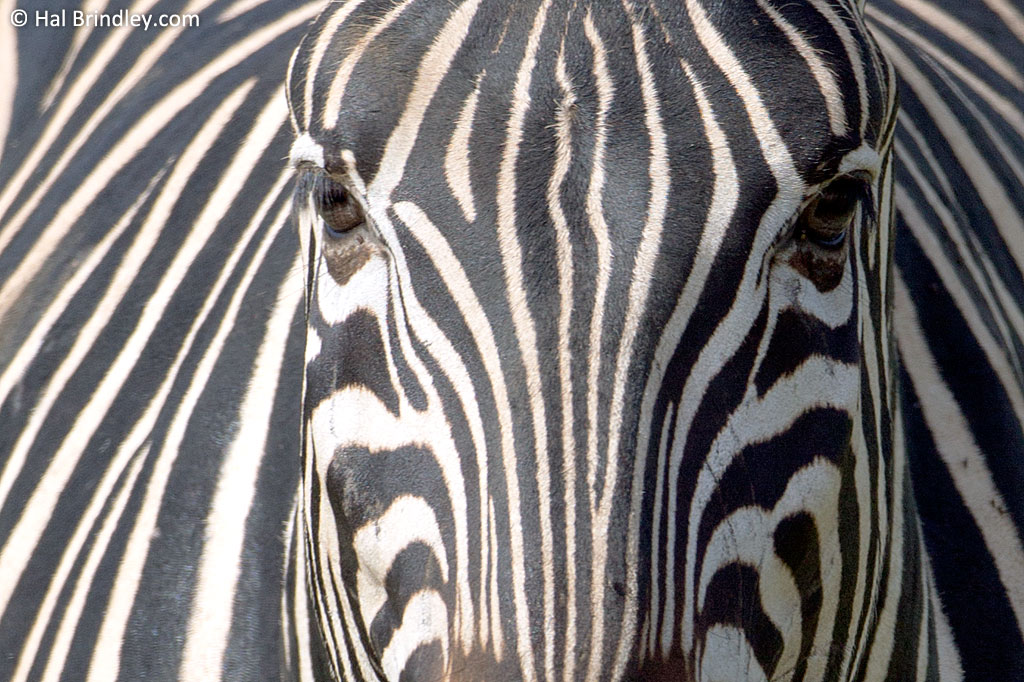

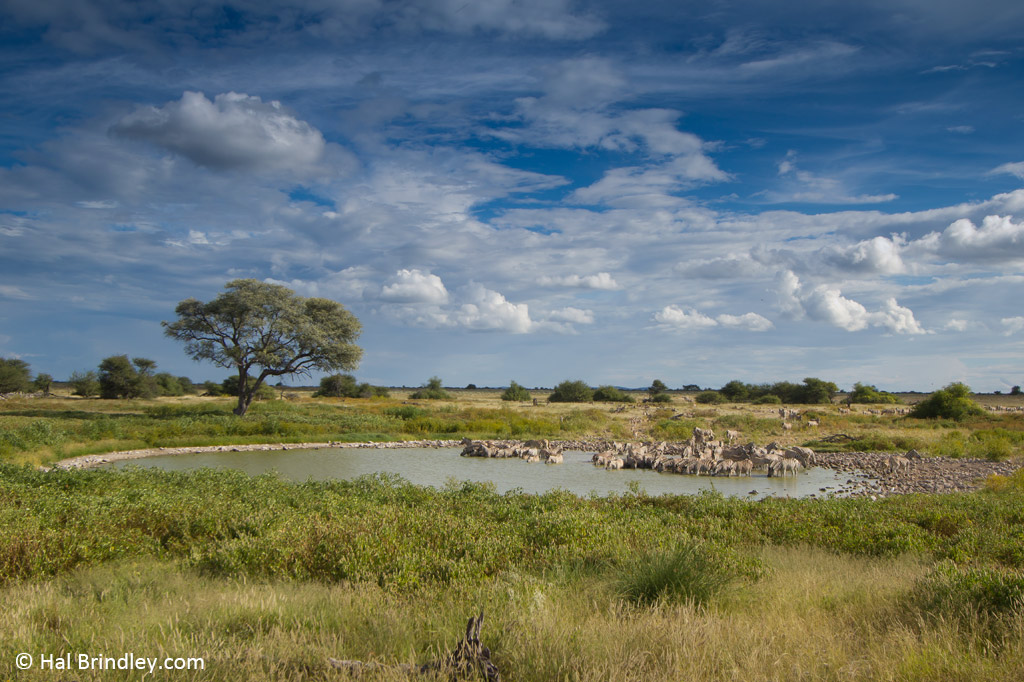
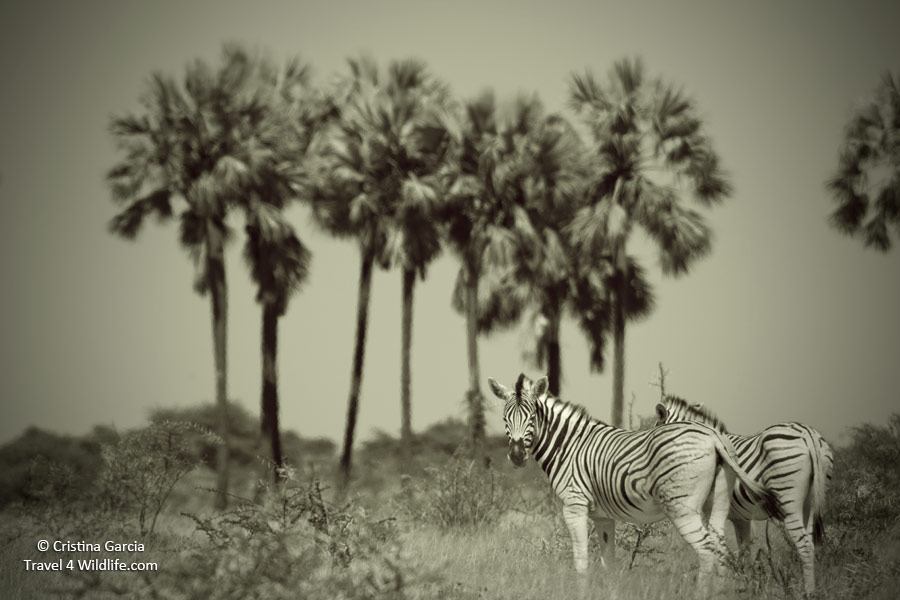
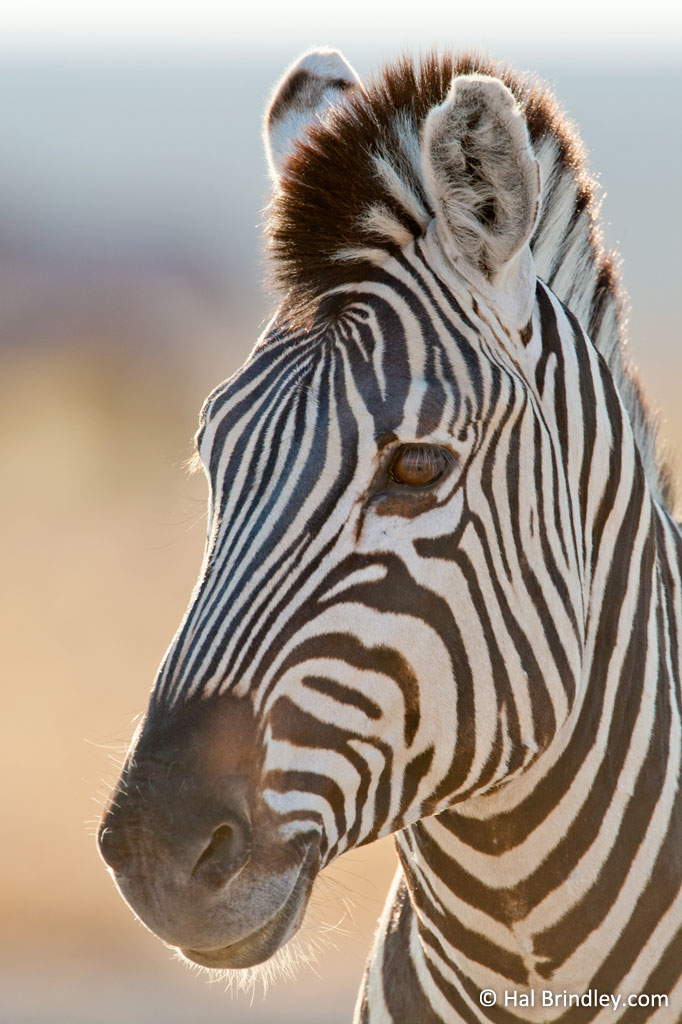
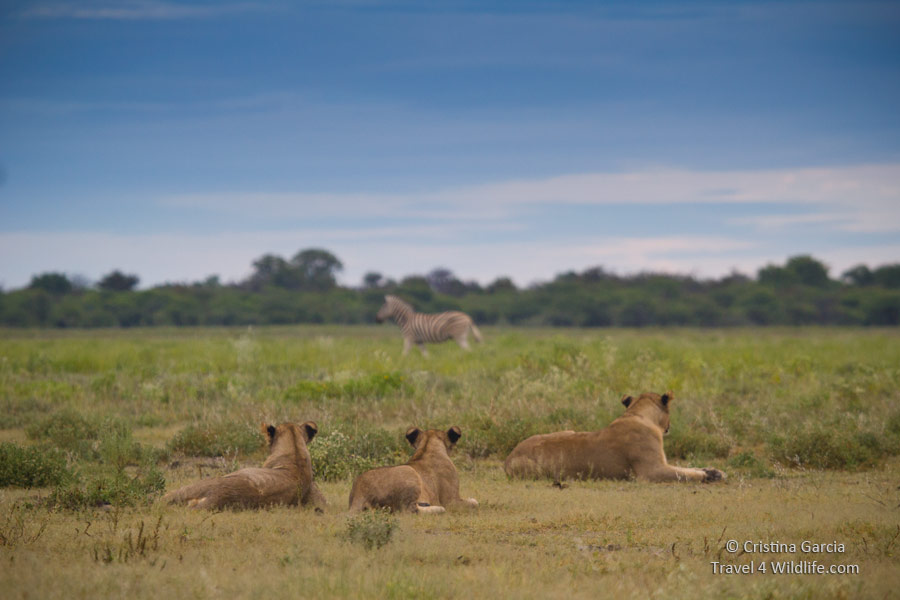

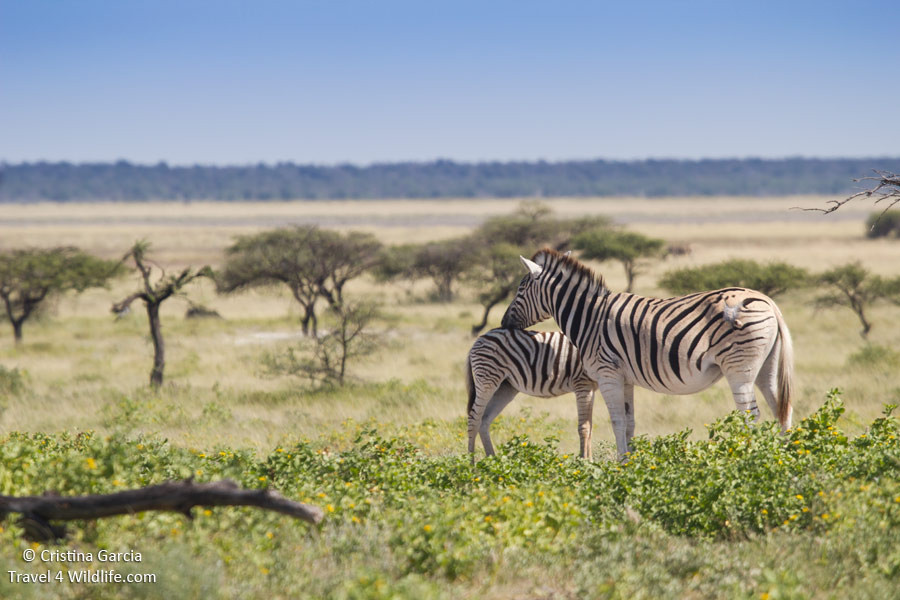
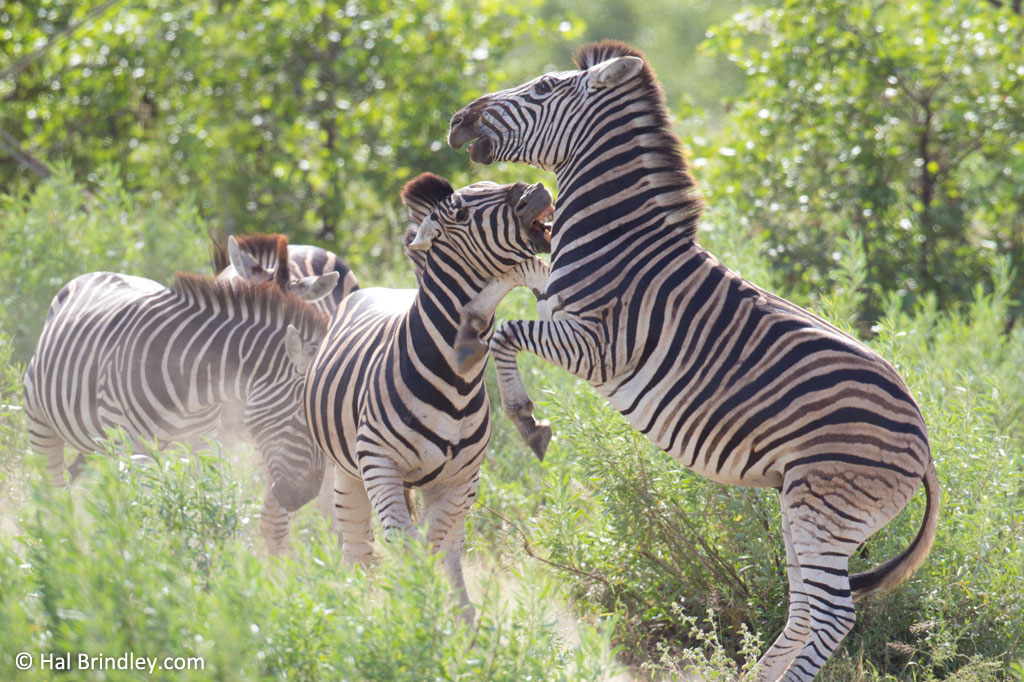
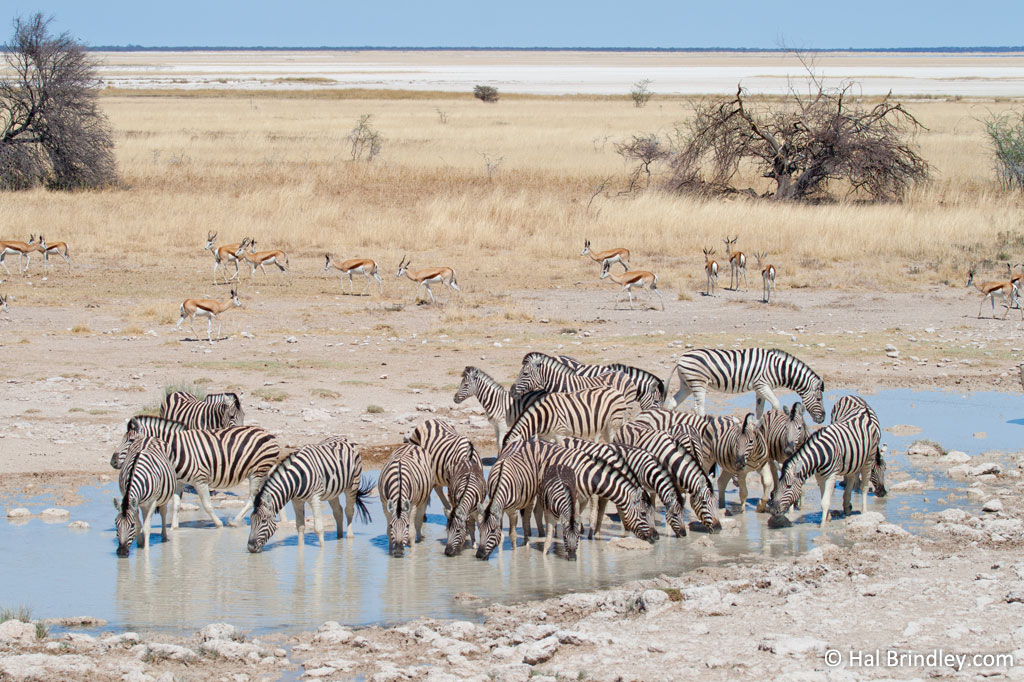
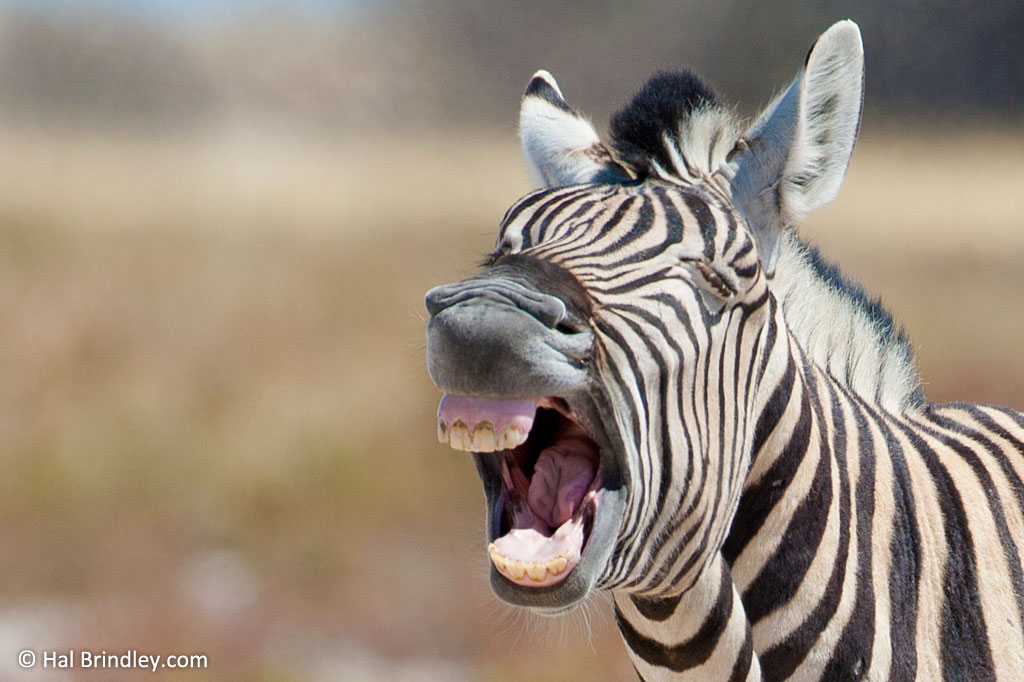
Cristina Garcia
Tuesday 17th of December 2013
Hi Vernon,
Thanks for stopping by! The photo of the zebra with the deep gash was taken in Etosha, just outside Namutoni. There is a pride of lions that hangs around the Chudop waterhole and they are great hunters. When we visited, they made a kill every night. That particular zebra walked fine (even with the wound) but yeah, I also wondered about infection. The photo was taken in April.
I would have loved to know what happened to it!
Vernon
Tuesday 17th of December 2013
I know I'm posting on an old blog post, but the images are still great to check out.
The Zebra with the deep gash would have a really hard time making it. Although they sometimes do (like your other image showed), they have to be lucky with both predators (they become the soft target) and infection...which would lead to predation as they weaken anyway. Clearly that image was taken during a fairly green time, and so infection would likely be bad.
Anyway, sorry that my first comment on your wonderful blog is so dreary...but it is interesting
Cristina Garcia
Wednesday 26th of June 2013
Thanks! Yeah, I was actually quite surprised that the zebra wasn't even limping. We saw a lot of them with scars like that.
Lucy | gapyeardotcom
Tuesday 21st of May 2013
Amazing quality photos - I never knew a group of Zebras was called a Dazzle! You learn something new every day.
Would love to jet off to Southern Africa right now to see them close up in real life.
Cristina Garcia
Tuesday 21st of May 2013
Thanks Lucy! Do it! Southern Africa is amazing.
Jordi C.
Monday 25th of February 2013
Cristina,
Incredible pictures as it is now customary from Travel4Wildlife. I specially love the close up picture. In Shamwari we had the opportunity to see some mean fighting between stallions, aiming for head and neck as you mention and also testicles. Our guide told us that they try to fight off competition by neutering the opponent. I wonder if any other animals use this tactic.
Once again, congratulations for a breathtaking gallery.
Jordi
Cristina Garcia
Monday 25th of February 2013
Awww thanks Jordi! Aiming for testicles!!?? wow, never heard of that!